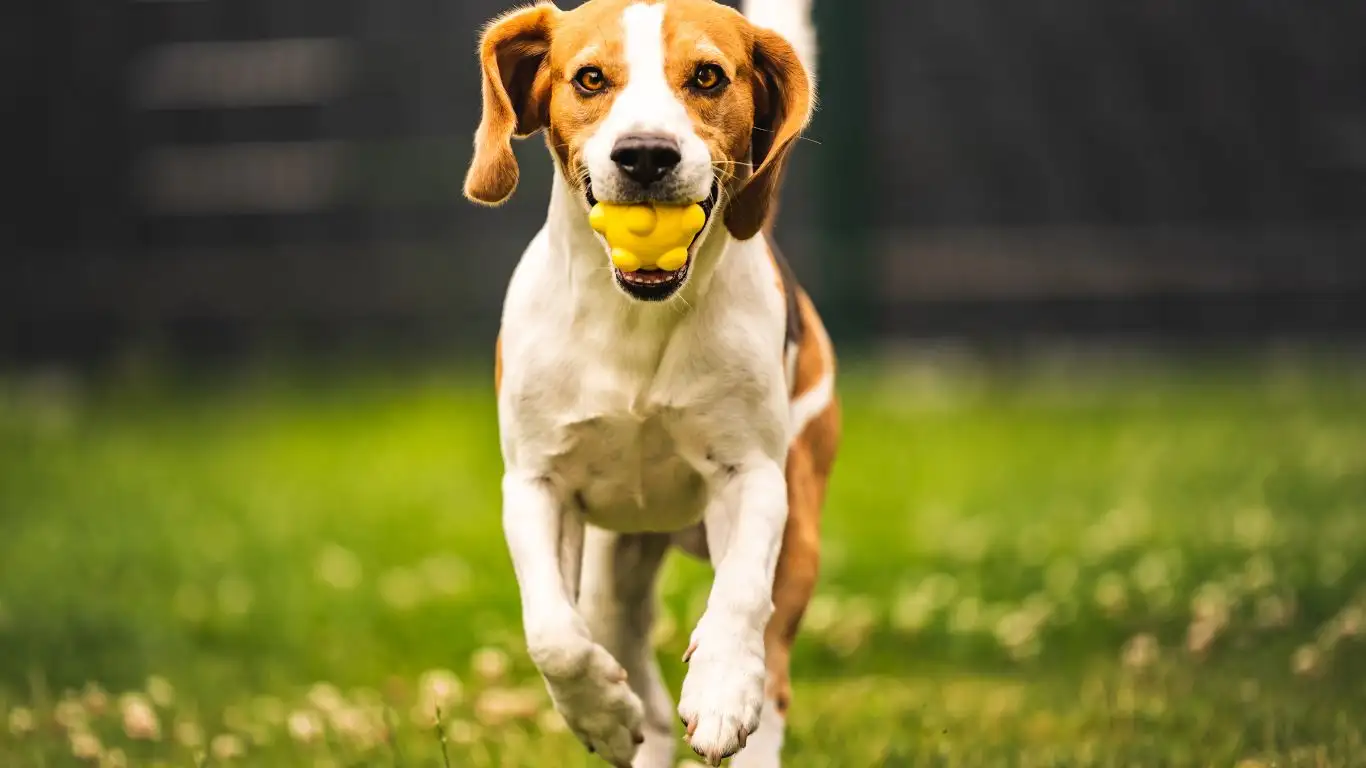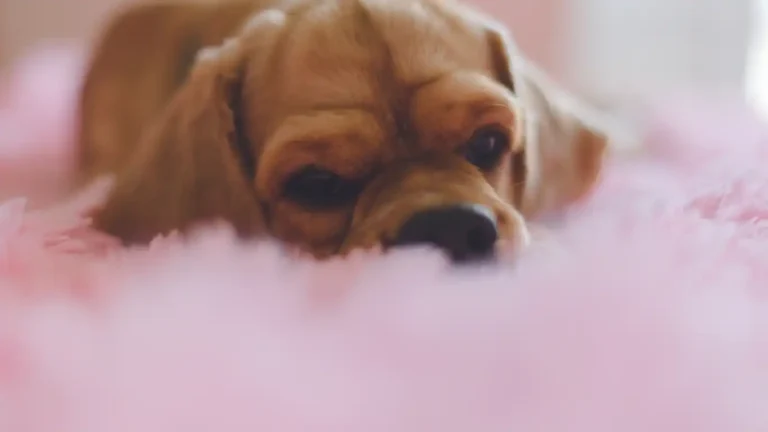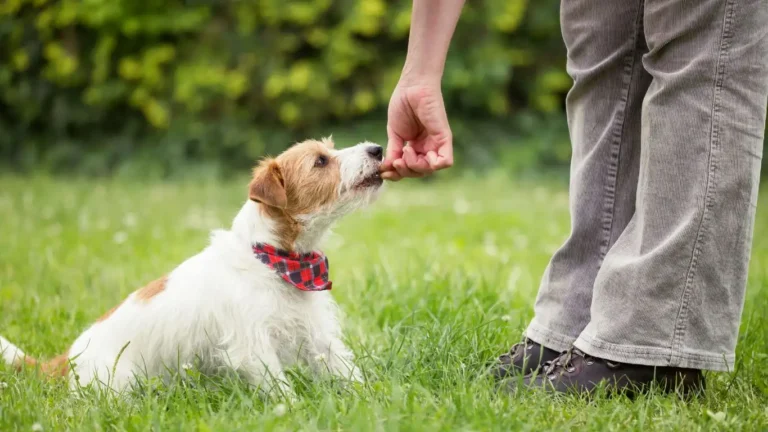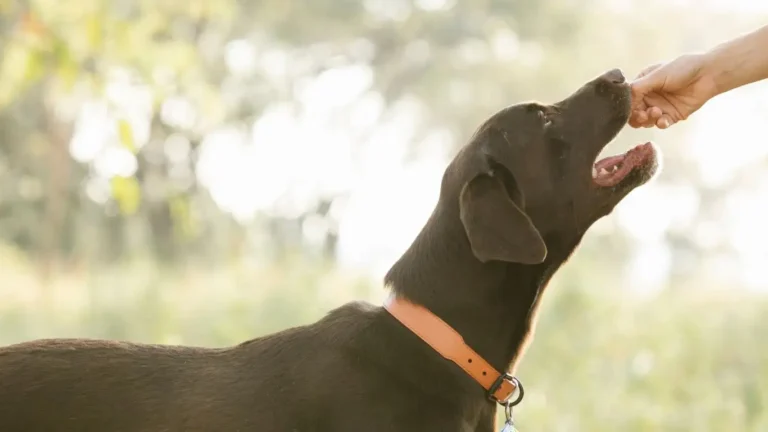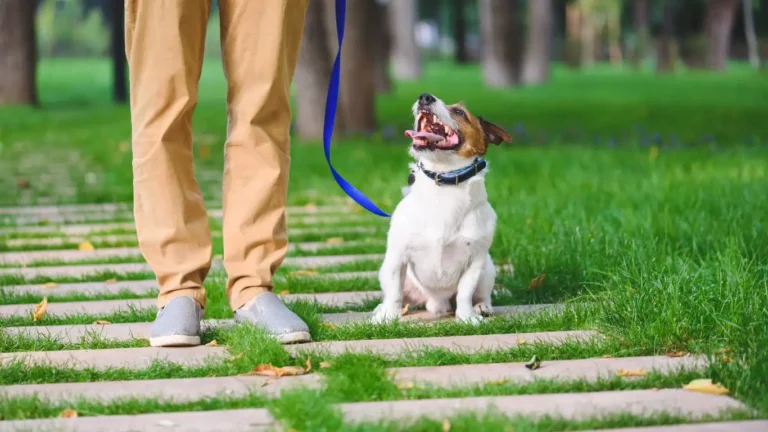How to Train a Dog to Stay Calm Around Other Animals: Effective Techniques
If you’ve ever found yourself nervously gripping your dog’s leash as a squirrel darts by or another dog walks past, you’re not alone. I’ve been there—more times than I can count. As a Canine-Assisted Therapy Trainer, one of the most common questions I get from clients is: how to train a dog to stay calm around other animals. It’s a tough one, especially if your pup gets overly excited, reactive, or even fearful around other furry creatures. But with a mix of patience, consistency, and the right techniques, calm behavior can absolutely be trained—and I’ve helped countless dogs do exactly that.
Understanding Why Dogs React to Other Animals
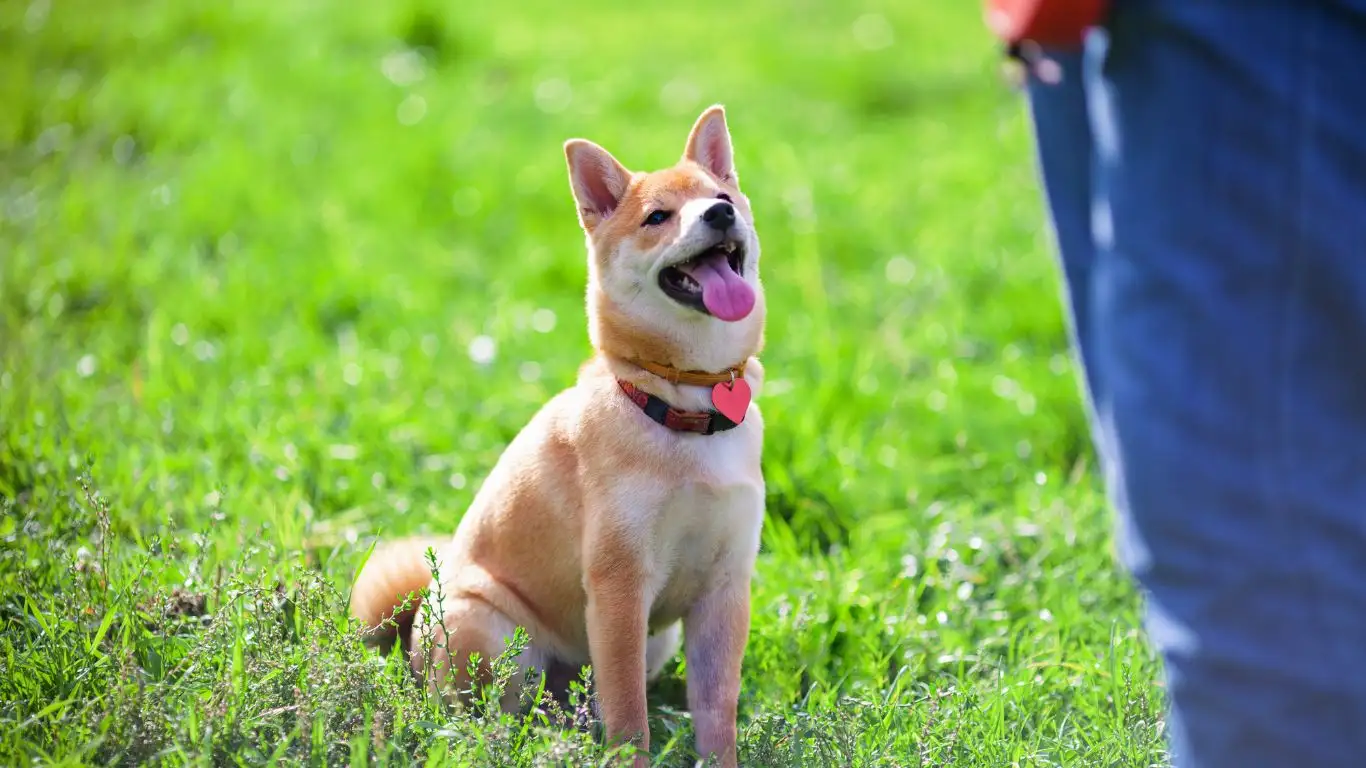
Before diving into the “how,” it’s important to take a step back and understand the “why.” Dogs aren’t just reacting for no reason. Whether it’s excitement, fear, territorial behavior, or just pure curiosity, there’s usually an underlying emotion driving that reaction.
Common Triggers and Reactions
- Excitement: Some dogs simply love other animals and want to play. Think of the social butterfly types—always eager to make new friends.
- Fear or Uncertainty: I’ve worked with dogs who grew up isolated or had bad experiences—these dogs can become defensive or anxious.
- Prey Drive: This is a big one, especially with smaller animals like cats, rabbits, or squirrels. Herding breeds, terriers, and hounds tend to have a stronger instinct to chase.
- Protectiveness: Some dogs feel it’s their job to guard you or their space. When another animal enters the picture, they go into defense mode.
Recognizing which of these applies to your dog is the first step toward addressing the issue. When I meet a new dog, I always observe how they act around other animals from a safe distance first—body language reveals a lot.
The Foundation: Building Calm from the Inside Out
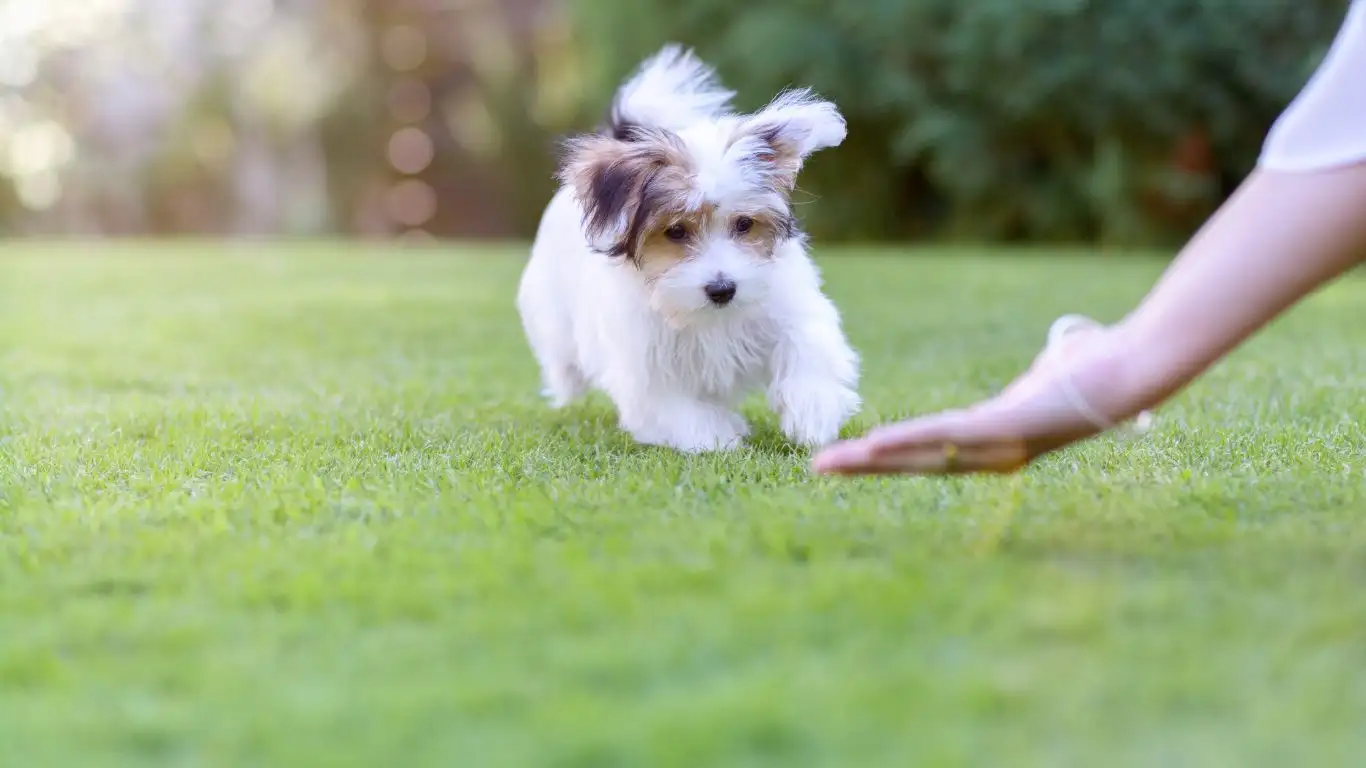
It Starts with Basic Obedience
You can’t expect your dog to stay calm in a high-stress situation if they’re not calm in everyday scenarios. This might sound harsh, but it’s true. I always tell my clients: if your dog can’t hold a sit when nothing’s going on, they won’t do it when a cat darts by. Solid obedience is your safety net.
Here’s what I always recommend as a baseline before tackling animal interactions:
- Reliable Sit and Stay: Your dog should be able to sit and stay for at least 30 seconds, even with mild distractions.
- Loose Leash Walking: No pulling, no zigzagging—just calm, focused walking.
- Look or Watch Me Command: This is a lifesaver. It helps redirect your dog’s attention back to you in tricky moments.
I remember working with a Golden Retriever named Max. Sweet dog, but reactive to every dog within a hundred yards. We spent two weeks just mastering sit-stay and “look at me” before we even approached another dog. It made a world of difference when we finally did.
Introduce Calm as a Learned Behavior
Calm isn’t just a natural trait; it’s a skill. A dog can learn to be calm just like it learns to fetch or roll over. I like to use what I call “calm moments training.” Basically, you reward moments of quiet, chill behavior—even if they’re tiny.
Picture this: you’re sitting in the park. Another dog walks by. Your pup looks but doesn’t lunge. That’s a win. Mark it. Reward it. Praise the heck out of it.
Some ways to reinforce calm behavior include:
- Treats and Praise: Small, frequent rewards work better than big dramatic ones. I keep soft training treats in a pouch so I’m always ready.
- Calm Voice and Body Language: If you get tense, your dog will too. Breathe, smile, stay loose. You’re their emotional mirror.
- Calming Tools: Thundershirts, calming collars, or anxiety wraps can give extra support—but they’re not magic fixes. Think of them as part of a bigger plan.
Controlled Exposure: The Secret Sauce

How to Train a Dog to Stay Calm Around Other Animals (Without Losing Your Mind)
This is where the magic happens—but also where it can go off the rails if you rush it. Controlled exposure, or desensitization, means slowly introducing your dog to other animals in a structured way that helps them stay under threshold. That’s trainer speak for: Don’t throw them in the deep end.
Here’s a method I use regularly:
- Start at a Distance: Begin where your dog can see the other animal but not react. This might be 30 feet away or more.
- Mark and Reward Calm: If they stay relaxed, even for a second, give a treat. You’re shaping behavior step-by-step.
- Gradually Close the Gap: Only move closer when your dog is consistently calm at the current distance.
- End on a Good Note: Don’t wait until your dog freaks out. Quit while you’re ahead and celebrate the small wins.
I once worked with a high-energy rescue mix named Luna who would lose her mind at the sight of a cat. We started in a parking lot 50 feet away from a neighbor’s cat that liked to lounge on the sidewalk. Week by week, we moved closer—by the end of month one, Luna was lying calmly just 10 feet away. Her family couldn’t believe it.
Use Real-Life Opportunities (But Don’t Wing It)
Walks are training opportunities. So are pet stores, parks, and even your own backyard. But don’t just “hope for the best” when an animal shows up. Be ready.
Keep these in your back pocket:
- Distance Is Your Friend: If another animal approaches and your dog gets tense, create space. Cross the street, turn around, anything to keep your dog under threshold.
- Have Treats Ready: Timing is everything. You want to reward before the freak-out, not after.
- Keep Sessions Short: Five calm minutes are better than thirty chaotic ones.
Training your dog to be calm around other animals takes time, but I promise—with consistency, it absolutely pays off. Every calm glance, every quiet sit, every ignored squirrel is a victory worth celebrating.
Reading Your Dog’s Body Language (So You Don’t Miss the Warning Signs)
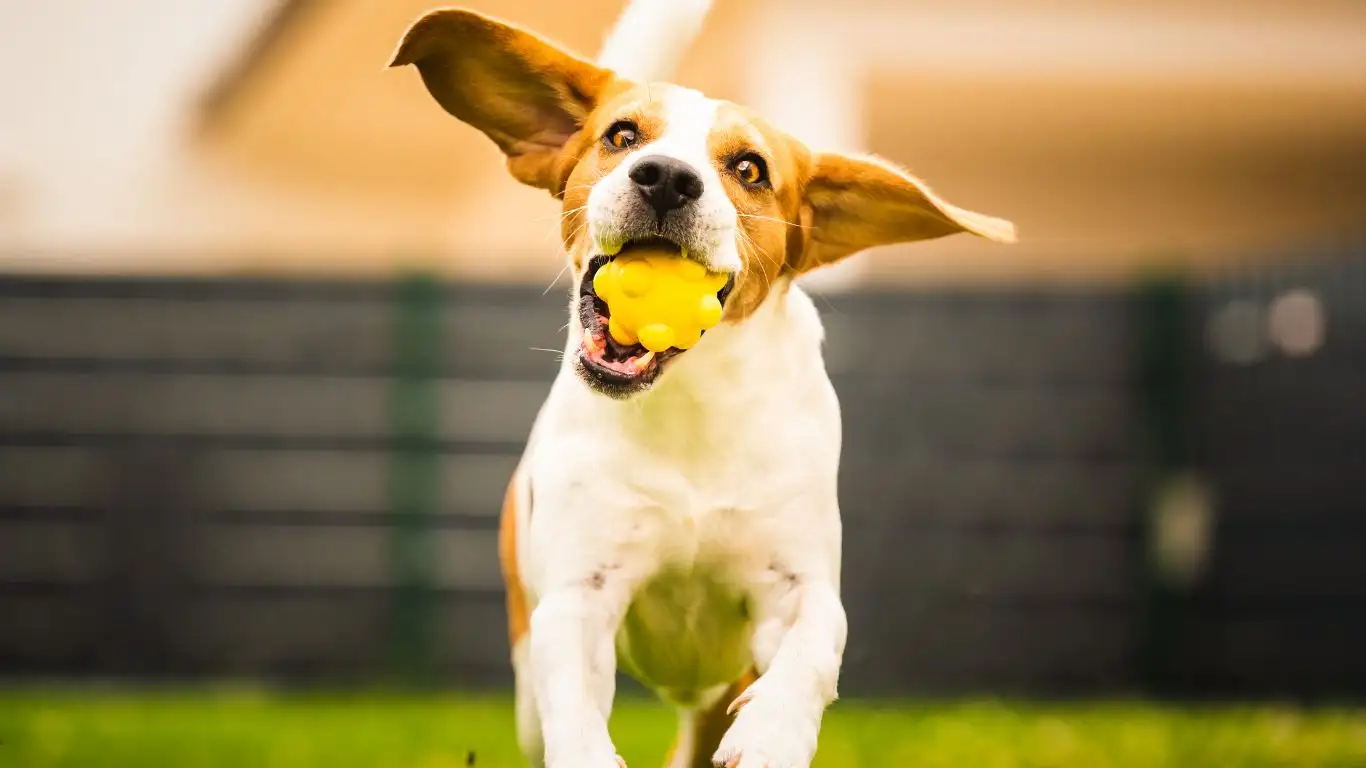
One of the most important skills I teach dog owners is how to read subtle body language. I know, it might sound basic—but trust me, it’s a game changer. When you’re trying to train a dog to stay calm around other animals, being able to spot their cues early helps you redirect before they spiral.
I’ve seen too many dogs go from calm to chaos because their humans missed the early signs of stress. Tail tucked, ears pinned, lip licking—these aren’t random quirks. They’re your dog whispering, “Hey, I’m not okay.” If you wait until they’re barking, growling, or lunging, you’re already in the red zone.
Subtle Signals to Watch For
- Whale Eye: You’ll see the whites of their eyes as they look sideways. It’s a sure sign of unease.
- Pacing or Shifting Weight: Like humans fidgeting in discomfort—dogs do the same when anxious.
- Stiff Posture: A tense, statue-like stance is a big red flag, especially if paired with direct staring.
- Yawning or Excessive Sniffing: Not always a sign of boredom! Often it’s displacement behavior—a dog’s way of coping with stress.
There’s a rescue Beagle I worked with named Olive—sweetest thing, but reactive to every neighborhood cat. Her owners thought she “just snapped” out of nowhere. But when we reviewed videos, I spotted five clear stress signs they hadn’t recognized. Once they learned to spot those early, their timing in training improved dramatically—and so did Olive’s reactions.
Teaching “Leave It” and “Let’s Go” as Lifesaver Commands
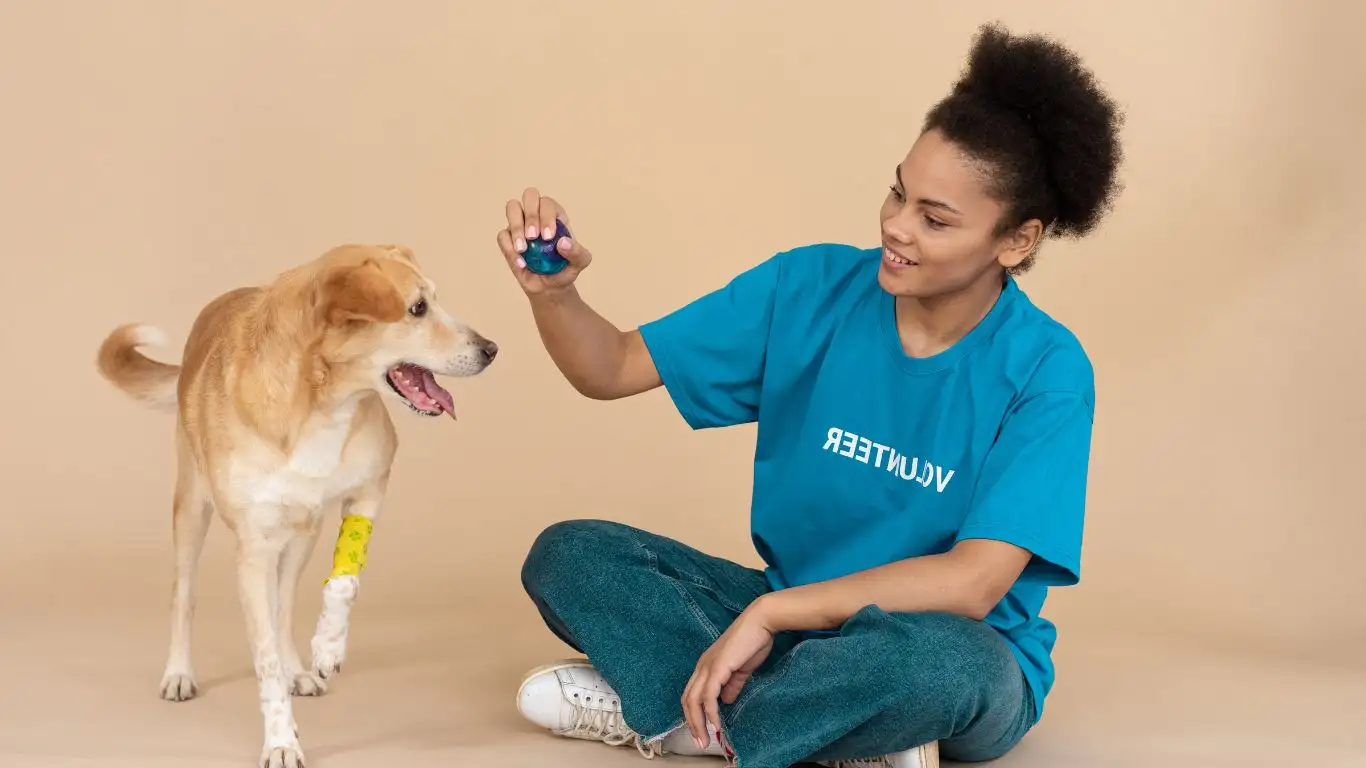
When it comes to how to train a dog to stay calm around other animals, there are a couple of commands I consider essential for real-world success. And I mean truly lifesaving in high-stress moments. If your dog only learns two things, let it be “leave it” and “let’s go.”
Why “Leave It” Matters
It’s not just about ignoring food on the floor—though that’s handy, too. “Leave it” tells your dog, “Whatever that is, it’s not your problem.” It’s a cue to disengage. I use it constantly when a squirrel bolts across the sidewalk or a cat darts out from a bush.
Quick tip: start teaching it with low-value distractions first. A piece of kibble on the floor. Then gradually raise the stakes. Never jump straight to live animals as your first challenge—that’s setting your dog up to fail.
“Let’s Go” – The Magic Reset
This one’s all about moving forward—literally. “Let’s go” is your graceful exit strategy. It’s how you say, “Alright buddy, we’re out of here,” without making a big scene. It redirects your dog’s energy into motion and gives you both a fresh start.
Try practicing it when your dog is calm first. Make it fun. Light tone, happy energy. Think of it like hitting the reset button when emotions start to run high.
Working Around Known Triggers Without Backsliding
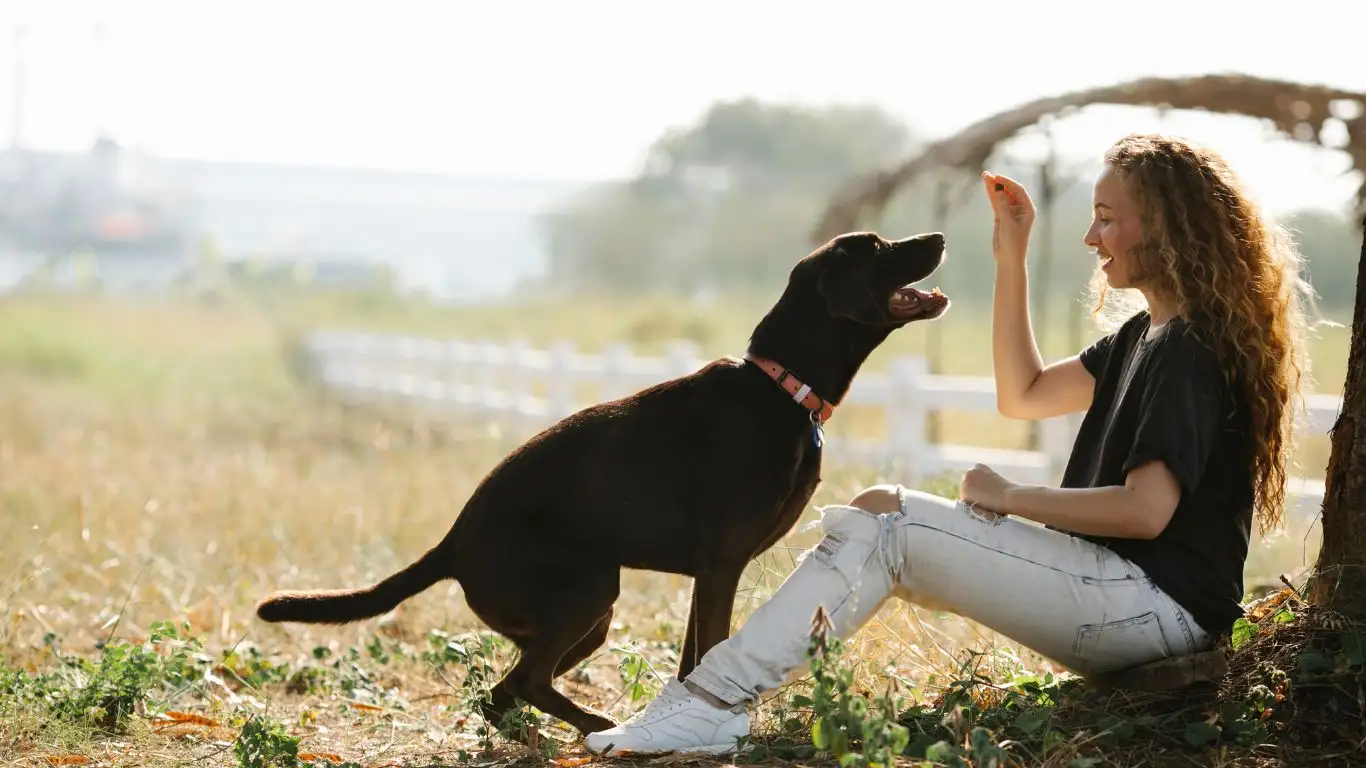
Okay, let’s say you’ve made solid progress. Your dog can walk past a rabbit cage at a distance or hold a sit while a cat strolls by. You’re feeling pretty proud—and you should! But then… out of nowhere, your pup regresses. This happens. A lot. I always reassure my clients: Backsliding doesn’t mean failure.
Why It Happens
- New Environment: Dogs don’t generalize well. Just because they’re calm at the park doesn’t mean they’ll behave the same way downtown or at your friend’s house.
- Stacked Stress: Bad weather, noisy construction, skipped breakfast… all of these add stress. A normally chill dog might hit their limit quicker.
- Hormonal Shifts: Yep, adolescence is a beast. Even well-trained puppies might suddenly act like they’ve forgotten everything at 8-12 months.
What to Do When Things Go Sideways
Take a breath, go back to basics. I’ve had dogs who aced everything in my yard but melted down the first time we tried a busy trail. In those moments, I treat it like day one. More distance, shorter sessions, lots of treats. No shame in the restart game.
Also, don’t underestimate the power of decompression walks. These are leash walks where your dog just gets to sniff and explore at their own pace—no commands, no training. It helps release stress and gets their brain back in balance.
Socializing Doesn’t Mean “Play with Everyone”
This is something I feel really strongly about—and it’s a huge mindset shift for many dog owners. Socialization isn’t about flooding your dog with interactions. It’s about creating positive, neutral exposures that build confidence without pressure.
Neutral Exposure Is Key
I like to set up parallel walks when possible. Two dogs, walking side-by-side at a comfortable distance, not interacting directly but sharing space. No sniffing marathons, no forced face-to-face greetings. Just quiet coexistence.
I once helped a client whose Boxer would bark like mad at every passing dog. We paired him with a calm older Lab named Lucy. They walked on opposite sides of the trail for a week before we even let them sniff each other. By week two, they were walking like old friends.
- Start with Calm Dogs: If you can, find a dog-savvy buddy who won’t react. Your dog will mirror calm behavior over time.
- Keep First Sessions Short: Five to ten minutes tops. End while things are still going well.
- Reward Calm Coexistence: No barking, no pulling, no tension? Jackpot. Treats all around!
Playdates Are Not the Goal
Sure, doggy playtime is awesome when it works. But not every dog wants—or needs—to be social. Some dogs are content just being around other animals without engaging. And that’s totally fine. In fact, I’d rather see a dog ignore a squirrel than try to chase it. That’s real-world success.
When in doubt, always ask yourself: What’s best for my dog’s state of mind right now? Sometimes, space is more powerful than interaction.
Coming up next, we’ll look at real-world tools and strategies for continuing to reinforce calm behavior beyond structured training—because your dog’s progress doesn’t end when the leash comes off.
Beyond Training: Real-World Tools for Reinforcing Calm Behavior
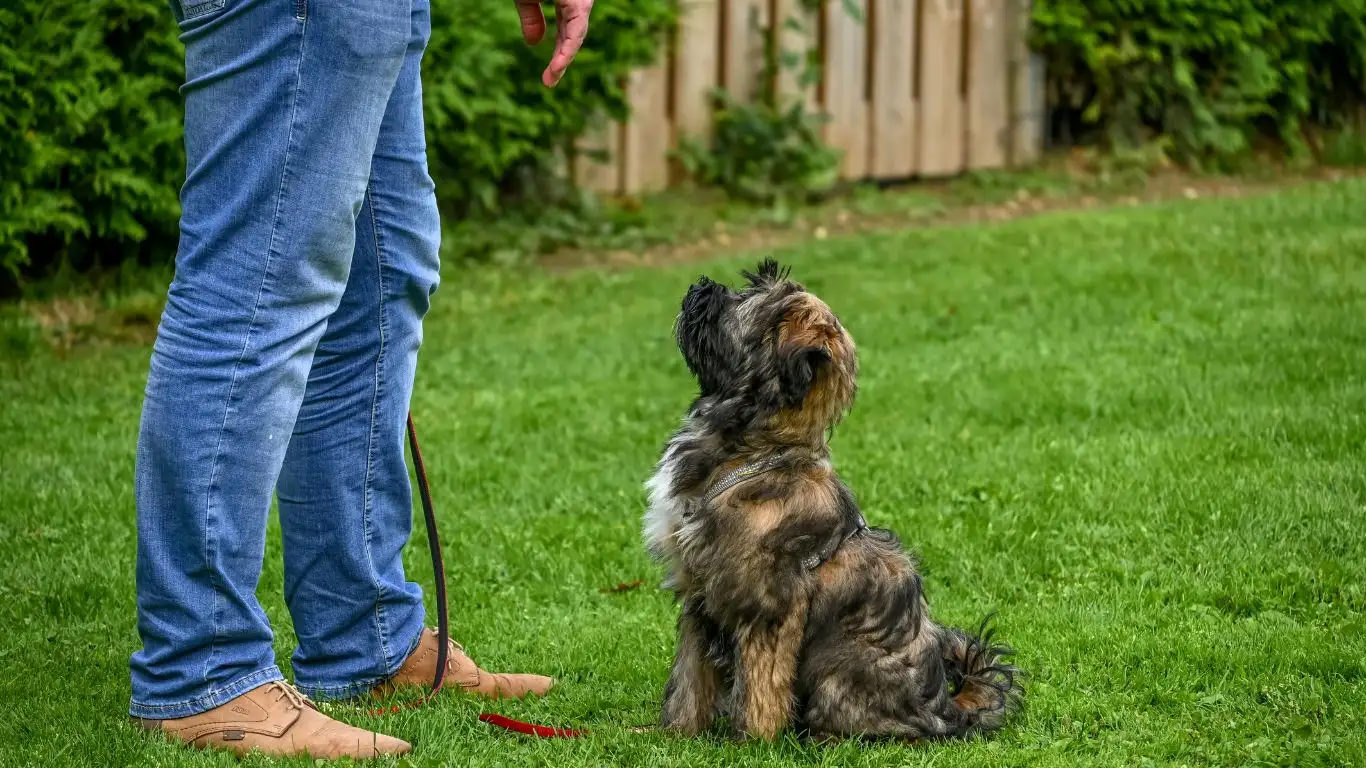
Training your dog to stay calm around other animals is just the beginning. The real trick is reinforcing that calm behavior consistently in real-life situations. In other words, you need tools and strategies to maintain progress as you navigate the world with your dog. This part of the training is all about setting both you and your dog up for success long after the formal sessions end.
Leash Training: Your Trusty Tool for Control
Let’s face it: the leash is one of your most powerful tools. But how you use it can make all the difference in the world. I always emphasize the importance of leash etiquette when working with reactive dogs. A leash isn’t just for holding your dog back—it’s a way to manage their movement and give them clear direction when they’re feeling stressed or distracted.
The goal is to keep the leash loose enough that it’s not a constant source of tension, but firm enough to provide gentle guidance when needed. If your dog starts to lunge at another animal, a quick redirect with the leash followed by a calm “let’s go” can make a huge difference. It helps your dog understand that pulling or reacting to distractions isn’t going to get them anywhere. Instead, walking calmly beside you is the ticket to success.
Calming Tools: When to Use Them (And When Not To)

In addition to training, some owners find that calming tools can provide valuable support—especially in the early stages of training. I’m talking about items like calming collars, anxiety wraps, and Thundershirts. These tools work by applying gentle pressure to your dog’s body, which can have a soothing effect, helping them relax when they’re feeling stressed or overstimulated.
However, I always remind clients that these are supplements, not magic fixes. They work best when paired with proper training. If your dog is still reacting to animals and hasn’t learned self-regulation, calming tools might help them cope in the moment, but they won’t eliminate the need for proper behavior training.
For example, I once worked with a Border Collie named Jax who had high prey drive. His owner used a calming collar in conjunction with training, and it gave him the extra support he needed when he saw squirrels or other dogs. Over time, Jax was able to stay calm without the collar, but it was an important tool early on.
How to Continue Training Outside of Formal Sessions
Training isn’t just something that happens in formal sessions. It needs to extend into your everyday routine if you want long-term success. Incorporating training into regular activities like walks, playtime, or even car rides can be incredibly effective.
Incorporate Training into Daily Walks
Daily walks are a golden opportunity to reinforce your dog’s calm behavior around other animals. I always tell my clients, “Don’t just walk—train!” Use your walks to practice leash manners, reinforce the “leave it” command, and reward calm behavior. Whether you’re passing other dogs, encountering squirrels, or walking by neighborhood cats, keep your focus on rewarding the calm, non-reactive behavior. If your dog starts to get too excited, simply guide them away, and reward them when they settle.
Walking on different terrains can also add a layer of distraction, so always mix up your routine. For example, walk on a quiet street one day and a busier area the next. This will help your dog generalize calm behavior across various environments and scenarios.
Positive Reinforcement: The Power of Rewards
Positive reinforcement is your best friend in this training journey. Whether you’re using treats, toys, or praise, consistently rewarding your dog for calm behavior will make a world of difference. I recommend using high-value treats—something your dog doesn’t get every day—to ensure that their attention stays on you and the task at hand.
That said, not all rewards need to be food-based. Sometimes a favorite toy or a game of tug-of-war can be just as effective, especially for dogs who are more play-driven than food-driven. It’s all about finding what motivates your dog and using that to your advantage. I always say, “If your dog’s happy, you’re winning!”
Enlist the Help of a Professional Trainer
If you’re hitting a wall, don’t hesitate to seek professional help. Working with a certified dog trainer can be a game changer. They’ll be able to provide personalized guidance and adjust your approach based on your dog’s specific needs. I’ve worked with many dog owners who thought their dog would never be calm around other animals, only to realize that a few small tweaks made all the difference.
A professional trainer can also help you work through more specific behavioral issues, such as fear or aggression, that might be underlying the reactivity. They can provide tools for desensitization and counter-conditioning to help your dog become more comfortable with other animals. Remember, every dog is different, and sometimes an experienced trainer can see things you might miss.
Consistency is Key: The Road to Long-Term Success
At the end of the day, consistency is what will drive lasting change in your dog’s behavior. Training isn’t something that ends after a few weeks of work. It’s an ongoing process that requires time, effort, and patience. Don’t expect perfection overnight—training a dog to stay calm around other animals is a marathon, not a sprint. But trust me, when you see your dog calmly ignoring another dog or walking past a rabbit without a second glance, you’ll know it was all worth it.
One thing I always remind myself (and my clients) is that progress isn’t always linear. There will be bumps along the way, and that’s okay. Celebrate the small wins and keep pushing forward, even when things get tough. With the right tools, techniques, and mindset, your dog will get there—and so will you.
For more tips on dog behavior and training, check out reputable resources like AKC and PetMD. If you ever need more personalized advice, a certified trainer can always lend a hand!
Disclaimer: This article is intended for informational purposes only and does not replace professional veterinary or training advice. Always consult with a veterinarian or certified dog trainer for concerns related to your dog’s behavior or health.
